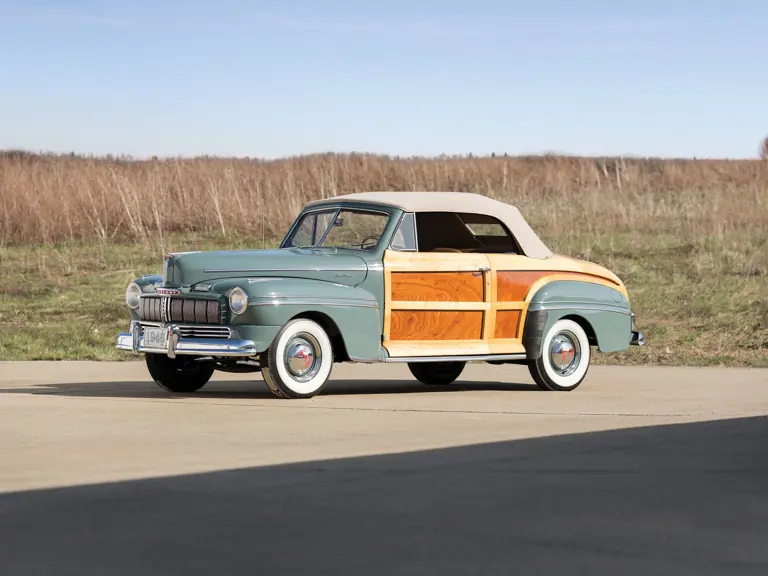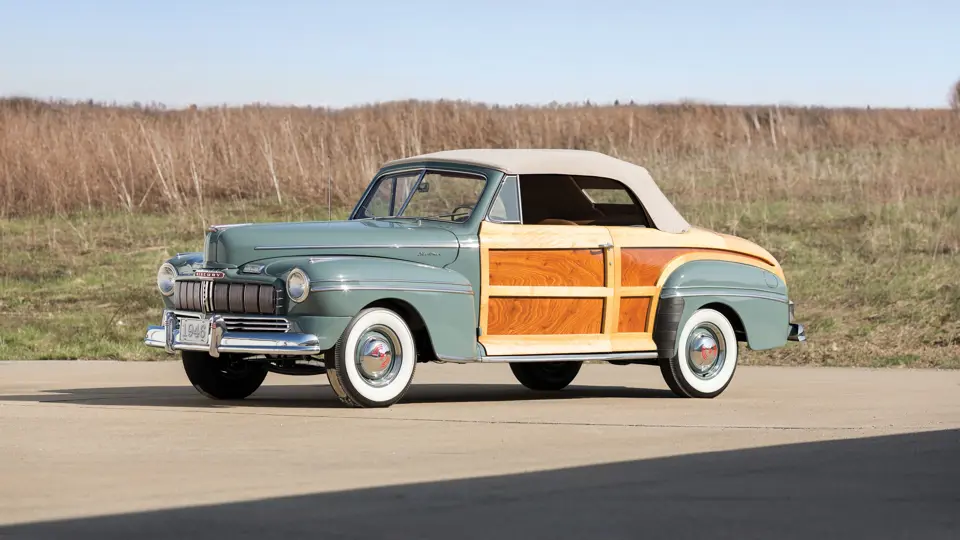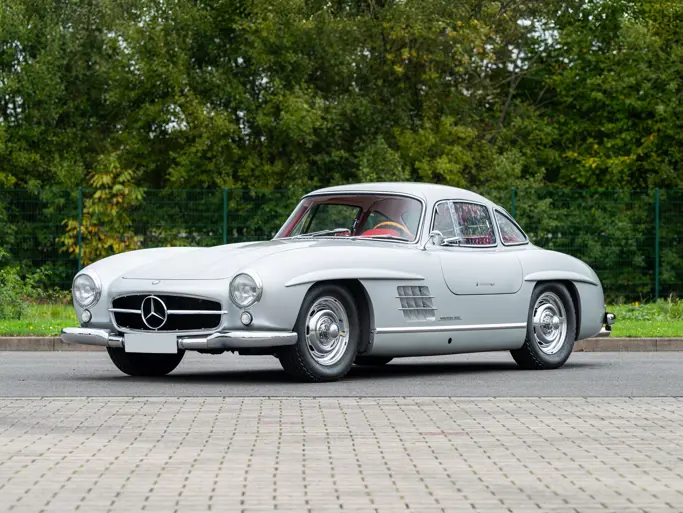 | Santa Monica, California
| Santa Monica, California
The 1945-48 period represents an interesting time in American automobile history. Automakers were struggling to fill pent-up demand for new cars while battling materials shortages and fending off labor disputes. At the same time, however, a few new prestige models were developed to accompany the bread-and-butter cars, which were barely changed from the 1942 models. Heading these prestige cars was a bevy of wood-bodied sedans, wagons and convertibles.
Chrysler Corporation had introduced a novel barrel-back Town & Country sedan-wagon before the war, produced as a Royal in 1941 and Windsor in 1942. A flight of five “woodie” styles was planned for 1946, but in the end only a Windsor sedan and New Yorker convertible were put on sale. Nash, meanwhile, put wood appliqué on an Ambassador sedan and sold it as the Suburban from 1946 to ’48, while Chevrolet offered a dealer-installed Country Club wood kit for 1946-48 models. At first glance it might appear that the Ford and Mercury Sportsman convertibles were conceived to emulate the Chrysler Town & Country, but the truth is not so simple.
During the war, Henry Ford II noticed a Model A chassis sitting in a corner of the Ford design studio. It had been there since the 1930s, an artifact about which the elder Henry Ford loved to reminisce. Young Henry asked chief designer E.T. “Bob” Gregorie to work up a body for it, so he could drive to the beach at his Long Island home.
Gregorie sketched up a wood-bodied convertible, with two doors, red leather interior and a khaki top over a Model A frame. It had a forward-sloped tail with Continental spare, which dropped down, tailgate style, and a stylish curved coupe pillar similar to that of the 1928-29 Model A closed cars. After the Fords had used the Model A for a summer on Long Island, it was given to Gregorie, who kept it and took it to Florida after his retirement.
That Model A convertible had a profound effect on the postwar Ford product line. In early 1945 Gregorie and his lead illustrator, Ross Cousins, were inspired by the sprightly little car and worked up drawings for a wood-bodied 1946 convertible. A prototype was built at Iron Mountain by taking the skin off an early production convertible and fitting wood in its place. Using standard convertible parts to the extent possible simplified manufacture and helped restrain costs.
Because the wood framing was necessarily larger than equivalent steel, the back end ended up a bit bulkier, and convertible fenders wouldn’t work. Instead, rear fenders and taillights from the 1941 sedan delivery were used. Sportsman seats were upholstered in genuine leather facings in tan or red, with French stitching. The front floor mats had color-keyed carpet inserts, and power windows were standard. Announced in September, the first Sportsman was completed in December 1945 and presented to actress Ella Raines at Christmas.
The Sportsman became part of the Ford Super Deluxe line; at $1,982 it was about $500 more than a standard convertible. Mercury, too, got a Sportsman, in April 1946, selling for $2,209, about the same margin over a regular Mercury convertible.
This Model 69M 1946 Mercury Sportsman is a completely and freshly restored car that has been 100 percent redone and is finished as finely as a piece of jewelry. The body-off restoration was completed in 2014 and included the chassis, engine, body, interior and top being finished in a nut-and-bolt fashion – as is every facet of the car.
The Mercury Sportsman maple and mahogany body (body style number 71) exhibits new wood and is expertly varnished and beautiful to look at. The wood contrasts nicely with the factory original Botsford Blue Green paint, which exhibits a rich luster. All body contours are correct. The top is tan canvas and is automatically operated, as are the cabin windows. The dashboard has restored mahogany woodgrain, the dashboard plastic and instruments are in excellent condition, as is the electric clock. The interior is presented in complementary brown leather; a radio and heater unit are also found among the interior features.
The 239.4-cid, 100-hp flathead V-8 59A engine is painted in correct blue and is presented in a finely detailed engine bay. The powerplant is matched to a three-speed manual transmission with a Columbia two-speed axle which enables highway speed touring. The Sportsman rides on color-keyed steel wheels with factory hubcaps and trim rings that are wrapped with BFGoodrich Silvertown wide whitewall tires.
Just 205 Mercury Sportsman convertibles were built between April and December 1946, when, due to disappointing sales, the model was discontinued. This model of car is among the rarest of Ford-built automobiles. The opportunity to acquire another will not soon be repeated.





